Spotify ENGAGE
CASE STUDY • PERSONAL PROJECT • UX/UI DESIGN & MARKETING
— is an in-app feature within the Spotify App that reimagines music-sharing and discovery in the form of a game.

Role
Product Designer
UX Researcher
Graphic Designer
Visual Identity
Product Designer
UX Researcher
Graphic Designer
Visual Identity
Team
Valerie E. Lianggara
Febe Tobing
Valerie E. Lianggara
Febe Tobing
Skills
User Research
Product thinking
UI/UX DesignVisual Design
Motion Graphics
User Research
Product thinking
UI/UX DesignVisual Design
Motion Graphics
Tools
Figma
Miro
Adobe Photoshop
Adobe AfterEffects
Figma
Miro
Adobe Photoshop
Adobe AfterEffects
Timeline
January - March 2021
January - March 2021
The Challenge
For the past two months, I collaborated with my fellow coursemate at CSM, Febe, to respond to the brief prepared by Spotify Design as part of the D&AD New Blood Awards. The challenge was to create a feature within Spotify that helps people easily share their content and get people talking about it on social feeds.
From the brief, we broke it down to these three points:
- How can the listening experience become a social experience by enabling people to share the audio that means the most to them?
- How can they help listeners build a deeper connection with friends and artists?
- How can we share lives through Spotify?
The Solution
In the current climate where social life is almost non-existent, music has been an escape for most in isolation. 79.9% of our user research group ages 14-25 consider friends and social interactions key influences in finding music.
So we got to thinking: In times like these, how might we reconnect and rebuild meaningful connections through our music consumption?
From this insight, we want to gamify music sharing to promote active communication through audio within the Spotify App, with the goal of unleashing the influence everyday users have as devoted listeners.
PROTOTYPE︎︎︎
EXISTING
Current Features
As daily users of Spotify, responding to this brief was something that excited me. As a team, we began our journey by gathering insights on Spotify’s existing features, but focused on features that might exhibit a social experience.
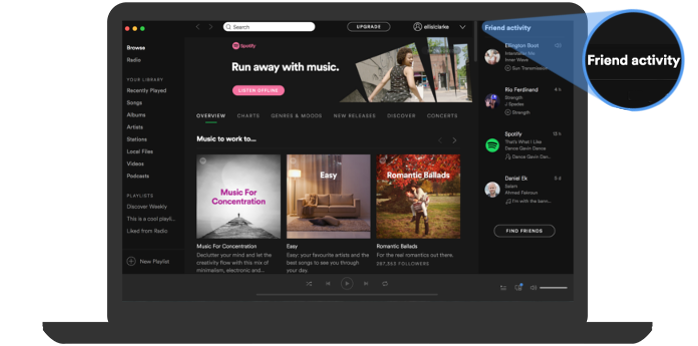

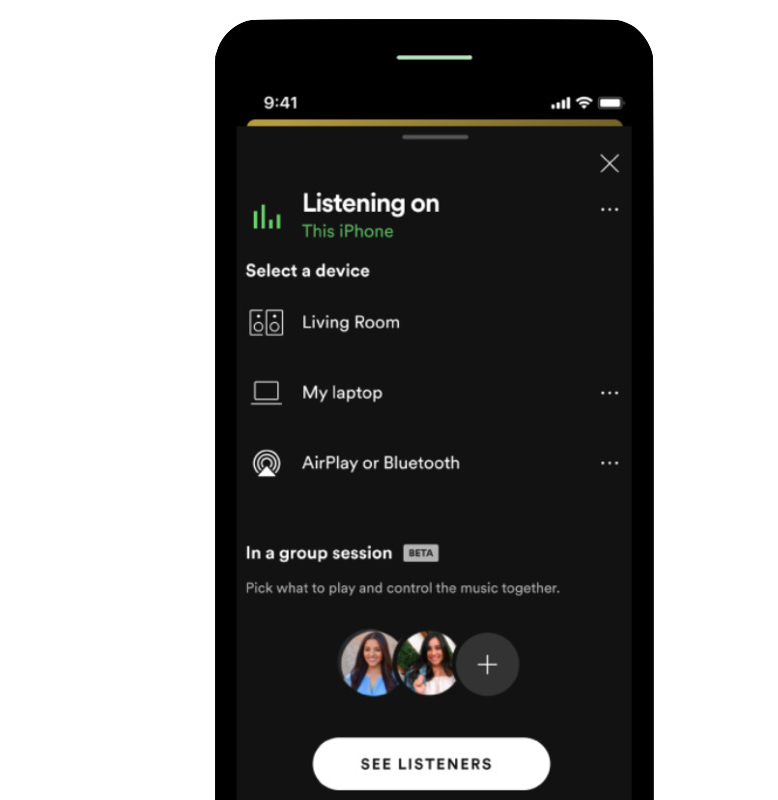
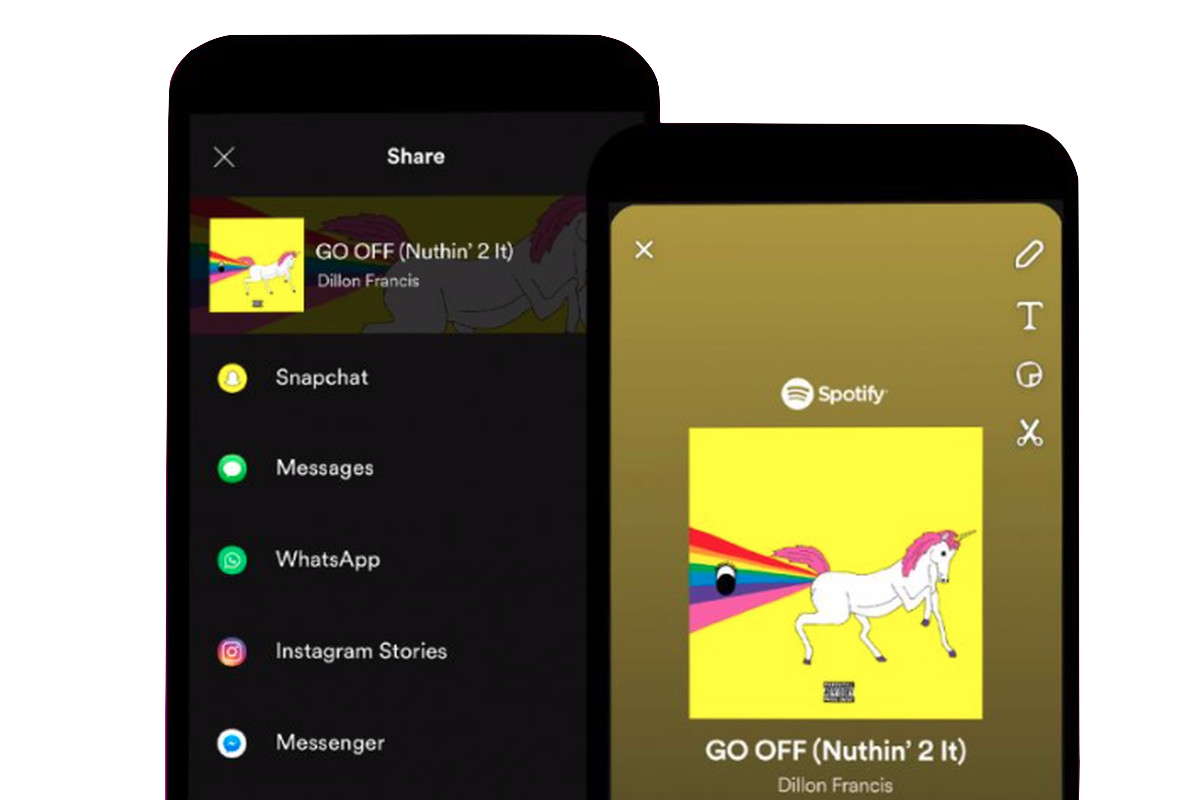
RESEARCH
Competitive Analysis
As daily users of Spotify, responding to this brief was something that excited me. As a team, we began our journey by gathering insights on Spotify’s existing features, but focused on features that might exhibit a social experience.
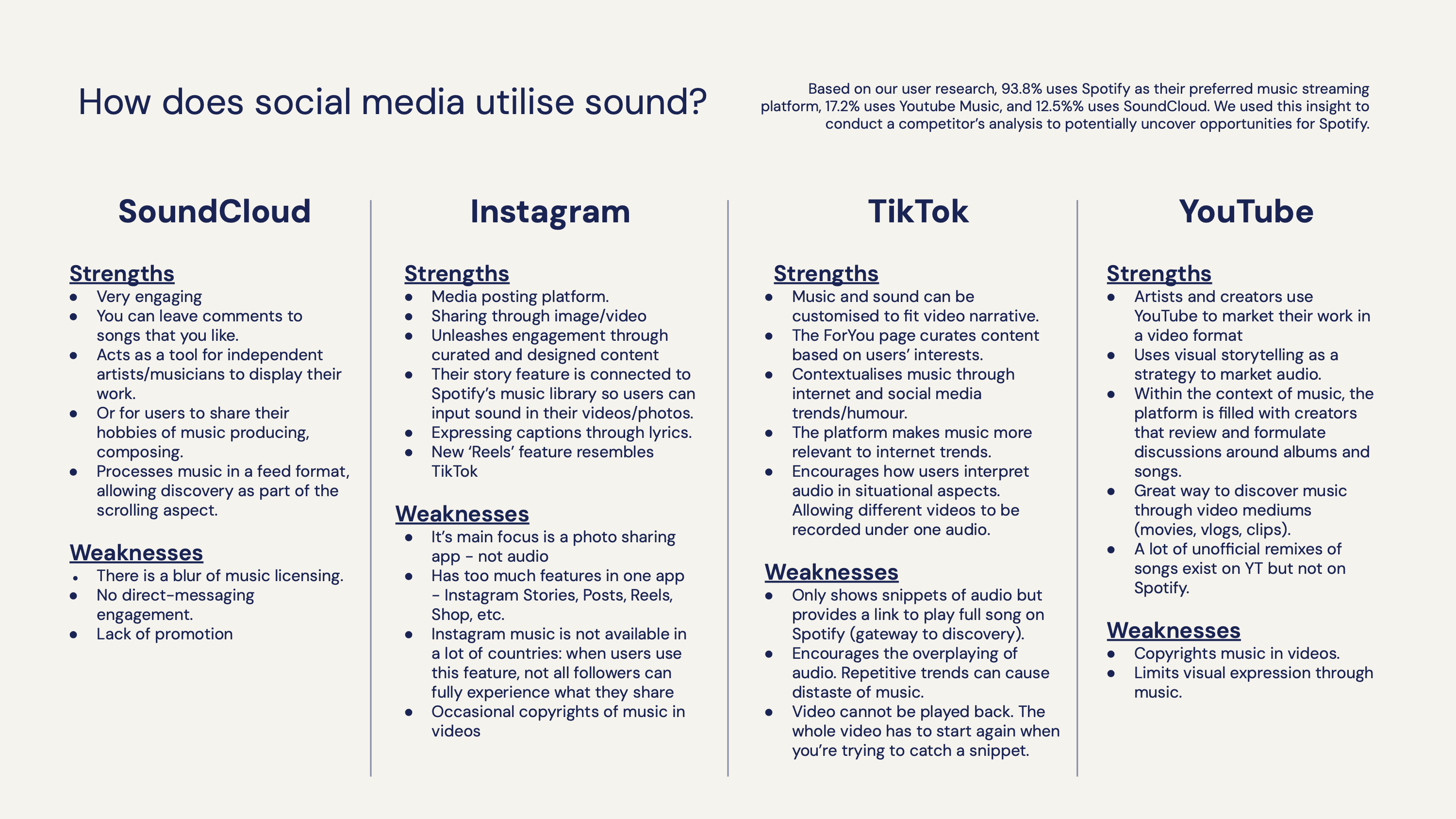
RESEARCH
User Interview
We set out to understand Spotify as a music-listening platform and its user experiences, and focused on how Spotify can make their listening experience a social one by sharing the music we love.
Based on quantitative surveys and contextual inquiry interviews, our findings proved how:
– Audio streaming for majority of the age group 18-30 (also known as active social media users) lies on extreme ends of the spectrum where most emphasises their preference to experience music alone but also enjoy listening with others.
The Friend Activity available in Spotify’s desktop app is a social feature that enables us to see what songs our friends are listening to in real time and we inevitably try to predict their mood based on that. We realized that a user’s music taste could potentially act as a non-verbal way of telling their story about who they are as humans.
In investigating the role of discovery in social listening experiences, the music curation process ranges from behaviour, activities, moods as components that we believe implies the phase of life the users are in. As music plays a huge role in ambience, we believe genre and mood go hand-in-hand in how people consume or process sound.
Through this analysis, we gathered the insight that:
– The more songs displayed in your playlists, the more you know about the person.
- In-person social settings revealed how music taste is an indicator to whether people want to engage with specific people.
- It acts as a filter to how humans make friends both online/offline.
- Spotify’s visibility of playlists on user’s profiles can act as a manifestation of a persona through music.
- Users make judgments on the person’s character what based on what they like to listen to.
With our focus group identified, we utilized this data, along with other points we gathered from our research, to create user personas to identify key pain points of users.
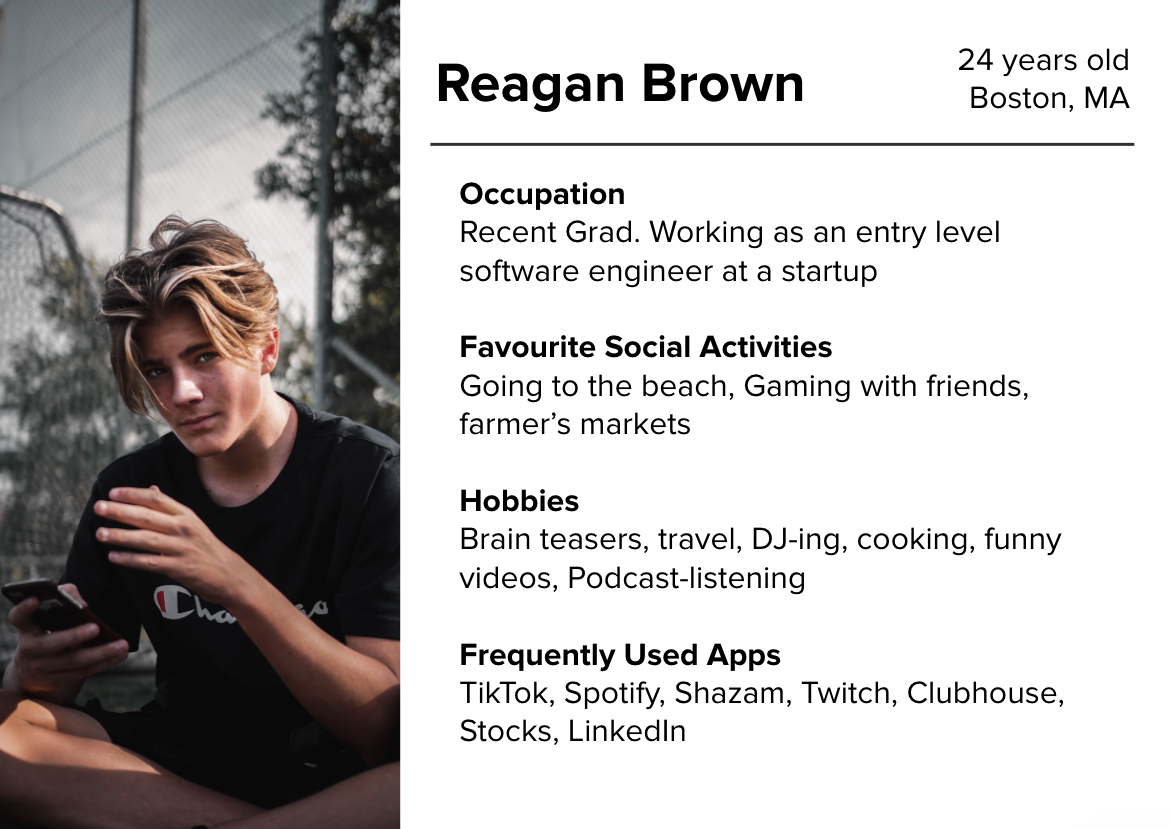

Key pain points:
Users don’t utilize Spotify’s existing social features to communicate with their peers.
Their features entail passive social engagement on the app but do not encourage enough active social experiences.
Sharing music through social media does not activate any participation anymore. It’s just another graphic that people mindlessly scroll through.
How might we...
create a sociable listening experience for Spotify users that encourages deep and meaningful connection?
IDEATION
Affinity Diagram (better title?)
After gathering user insights, we sorted out our insights and findings by creating a digital affinity diagram on Figma. We listed all the points and categorized them according to each challenge and inquiry, and concluded a realisation.

In our research to emphasise the role of word of mouth in sharing and believing that there is a song for every situation, we plan to create prompt-based and conversational game where players have to answer a prompt with a snippet of a song. We looked into existing references that might help us solidify our concept.




IDEATION
User Flows
To make a fluent experience of game access, activation and play, we identified the user flow. Our goal is to mainly target the process of our audience going in, through and out of the game with an engaging experience. We used Miro to create two user flow diagrams, one focusing on access and activation and another focusing on play.
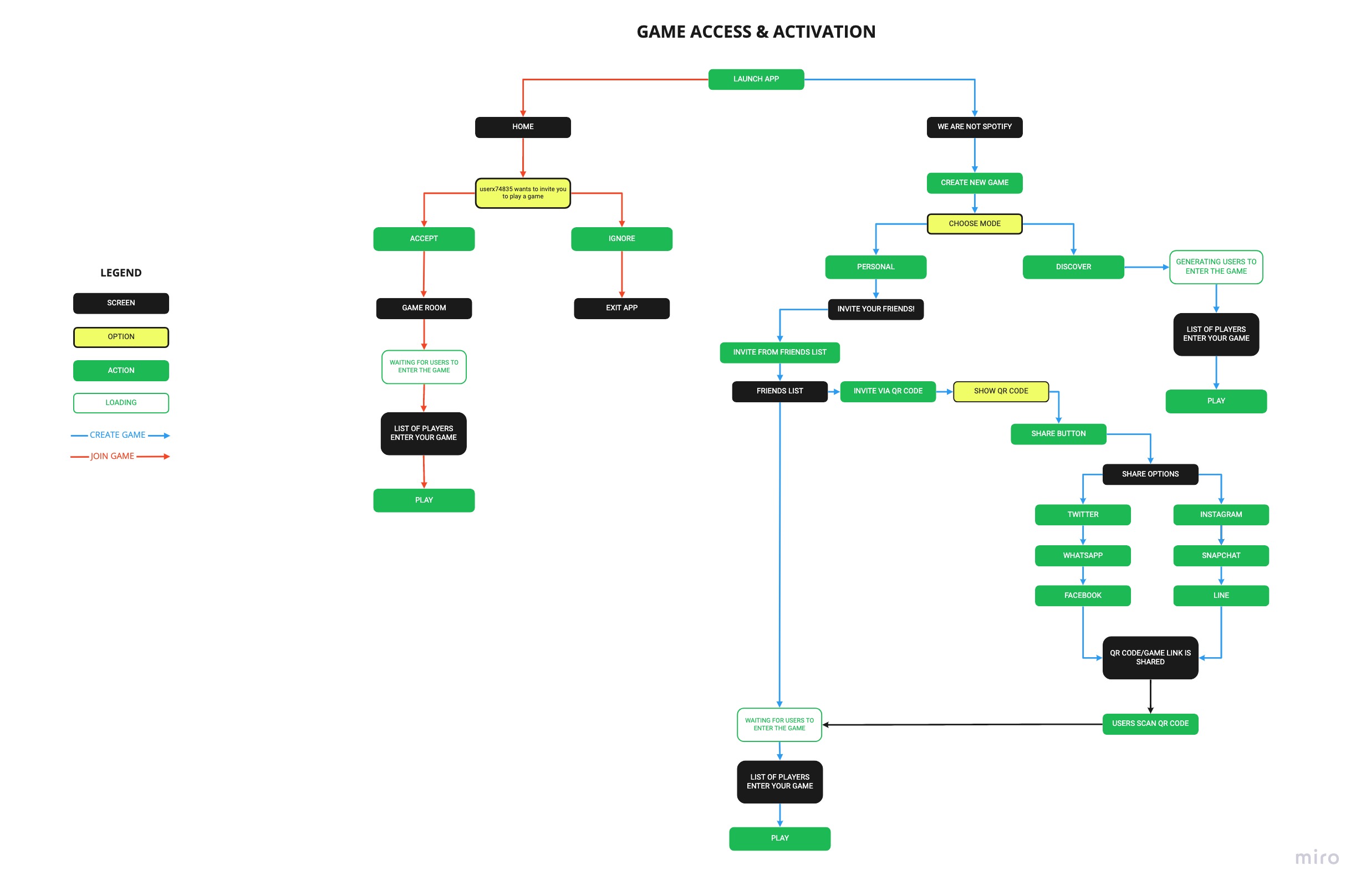

DESIGN
Wireframes
Insert description

DESIGN
High-fidelity
Implementing the design system into our low-fidelity wireframes, we finalized the high-fidelity prototype with all illustrations, smooth user flows and visually pleasing user interface that matches Spotify’s system.

DESIGN
Illustrations
Since this is an additional feature within the Spotify app, we used Spotify’s existing design system. But we wanted to implement our own visual elements as well, so we created a colour palette that still resembles Spotify’s style and made illustrations as creative elements within the game.

DESIGN
Final Experience

REFLECTION
This was my first experience submitting an entry for the D&AD New Blood Awards, and I was lucky enough to have an incredible teammate/friend to go through this with. We divided our tasks equally and bonded over our love for Spotify and design. This was definitely one of the most in-depth, challenging yet rewarding projects I have tackled thus far. Not only did we get to design a product feature, but we also came up with a marketing campaign to present our idea. I learned so much from this project, and was definitely surprised by the amount and quality of work we managed to produce.
Because Spotify is a platform that I incorporate in my daily life, it was such a pleasurable experience for me to design and create something within the app itself. This project was incredibly eye-opening and fun, and pushed me to practice both my UX/UI skills and pitching skills. As an introvert, I sometimes deal with being socially awkward when meeting people in real life for the first time. I kept this in mind when designing Spotify ENGAGE, to consider the depth of social aspect and to ensure that even introverts/people who tend to be shy can still experience this social feature. That being said, I hope that others can take inspiration from Spotify ENGAGE, and that one day it can come to life.
Key Takeaways
This was my first experience submitting an entry for the D&AD New Blood Awards, and I was lucky enough to have an incredible teammate/friend to go through this with. We divided our tasks equally and bonded over our love for Spotify and design. This was definitely one of the most in-depth, challenging yet rewarding projects I have tackled thus far. Not only did we get to design a product feature, but we also came up with a marketing campaign to present our idea. I learned so much from this project, and was definitely surprised by the amount and quality of work we managed to produce.
Because Spotify is a platform that I incorporate in my daily life, it was such a pleasurable experience for me to design and create something within the app itself. This project was incredibly eye-opening and fun, and pushed me to practice both my UX/UI skills and pitching skills. As an introvert, I sometimes deal with being socially awkward when meeting people in real life for the first time. I kept this in mind when designing Spotify ENGAGE, to consider the depth of social aspect and to ensure that even introverts/people who tend to be shy can still experience this social feature. That being said, I hope that others can take inspiration from Spotify ENGAGE, and that one day it can come to life.